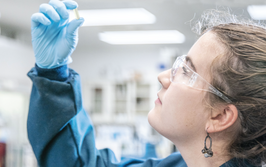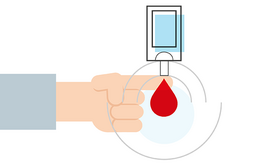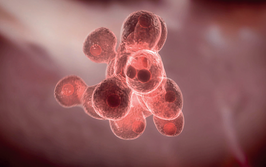Blistering Headspace
Stability challenges are a constant issue for new formulations, which is why packaging solutions should target headspace.
Oral solid dose (OSD) – a category that comprises both capsules and tablets – remains the most popular delivery method in use today. And it’s easy to see why. OSDs are well understood from a manufacturing point of view and well accepted by patients. They are also convenient, cost effective and easy to transport and store. The industry continues to investigate other delivery methods, but OSDs are likely to be the preferred choice for the foreseeable future, especially given the continuing advances in formulation technologies that are allowing increasingly challenging APIs to be delivered orally. Additional innovation continues in the area of modified release specifications, such as sustained and controlled release, which offer more convenient dosing, as well as orally disintegrating tablets that can target patients with swallowing issues.
Unfortunately, new formulation approaches can come with a downside: instability in the face of moisture, oxygen, hydrocarbons and other gases. Instability can also come from reactive impurities, such as formaldehyde and formic acid, which have been implicated in the degradation of drug products and cross-linking in gelatin capsules. As a result, packaging solutions must advance to face these significant challenges. Though many packaging solutions today can effectively protect products from unwanted moisture and oxygen ingress, I believe the industry can do better. We need to be developing state-of-the-art packaging solutions that can proactively remove moisture and gases within the package headspace, as well as reactive impurities and off-gassing from OSDs.
Bottles and blisters, the OSD package options of choice, each face headspace management challenges, which begin at the time of production, and continue with ingress over time and in various environmental conditions. Despite the larger amount of headspace, bottles have a simpler solution than blisters for headspace management – it’s very easy to incorporate sachets and canisters to provide desiccant and/or scavenger capabilities, and there are many solutions to choose from. Adding barrier technology to the actual bottle material can also provide enhanced degradation protection.
But what about blisters? Developing advanced protection solutions for blisters is more challenging than it may at first seem. The headspace within individual blisters is very small, but it can significantly impact shelf life, depending on the sensitivity of the OSD. Aluminum foils and high barrier thermoforms are popular options for reducing ingress, but headspace moisture, gases and impurities can persist.
Solutions have now started to emerge that can help control the internal atmosphere of each blister cavity. Desiccant and scavenging agents can be adhered to the blister’s lidding via heat-staking just prior to sealing, so that they sit beneath the capsule or tablet and completely within the sealed space of the individual blister. The process can be performed without using adhesives, which is important as adhesives can generate the very additives that the technology seeks to remove. Using silica gel or molecular sieve technology, outfitted blisters can be customized to absorb tailored amounts of water vapor.
Incorporating smarter packaging solutions can sometimes be perceived as a headache by pharma manufacturers and contract packagers, but it’s now relatively straightforward to identify the best options by using simulated modeling, which examines the impact of blister solutions with various blister materials and designs. Attractive options can be examined through prototyping and shelf-life testing to determine the desiccant or scavenger performance best suited to protecting a particular OSD.
With recent improvements in process machinability and cost-effectiveness, there are now far fewer reasons to pass up smarter blister packaging innovations that can add true value to a critical stage in the lives of OSDs: the varying timeframe between final packaging and ultimate consumer use. Pharma manufacturers who dedicate research and resources to creating advanced formulations are well advised to consider the totality of their products’ lifespans. The technology now exists to more exactingly protect blistered products from stability issues throughout their supply chain journey. Why risk not having it?
VP of Business Development for CSP Technologies, US.


















